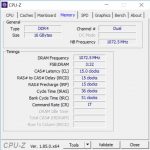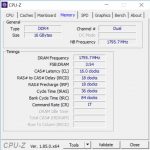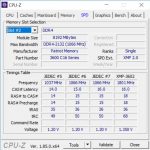We usually test memory on an Intel platform, and we do this for two reasons. The first is that Intel tends to be the mainstream choice for gamers and enthusiasts so it makes sense to cater for the majority of the buying public. The second reason is that memory support for AMD has a history of flaky behaviour and it is fairly hopeless running tests when you may suffer a blue screen simply by enabling XMP. In fairness to AMD we should point out that XMP is an Intel standard but if we put the naming scheme to one side we simply want to install the memory, hit the switch in the BIOS and run the memory at its rated speed.
Since AMD launched the 2nd Gen Ryzen we have noticed more memory manufacturers claiming their RAM is compatible with the AM4 platform. It is worth noting that Asus has a memory setting called DOCP (Direct Over Clock Profile) on its motherboards that is the equivalent of XMP. This seemed like a good opportunity to test four fast DDR4 memory kits on AMD so we lined up:
- 16GB HyperX Predator RGB DDR4-2933MHz
- 16GB G.Skill FlareX DDR4-3200MHz
- 16GB G.Skill SniperX DDR4-3400MHz
- 16GB Patriot Viper RGB DDR4-3600MHz
Test System:
Processor: AMD Ryzen 7 2700X (4.0GHz all cores)
Motherboard: Asus ROG Crosshair VII Hero Wi-Fi
CPU cooler: Fractal Design Celsius S24
Graphics card: GTX 980 4GB
Power supply: Seasonic Prime Titanium 1000W
Storage drive: Samsung 960 Pro
OS: Windows 10 64-bit.
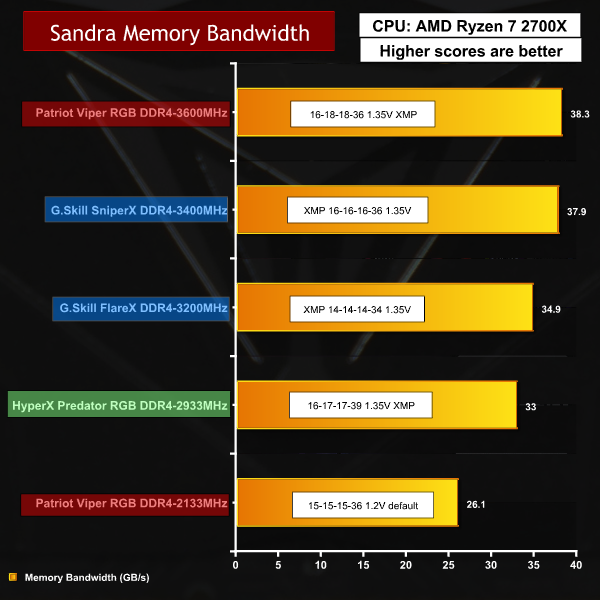
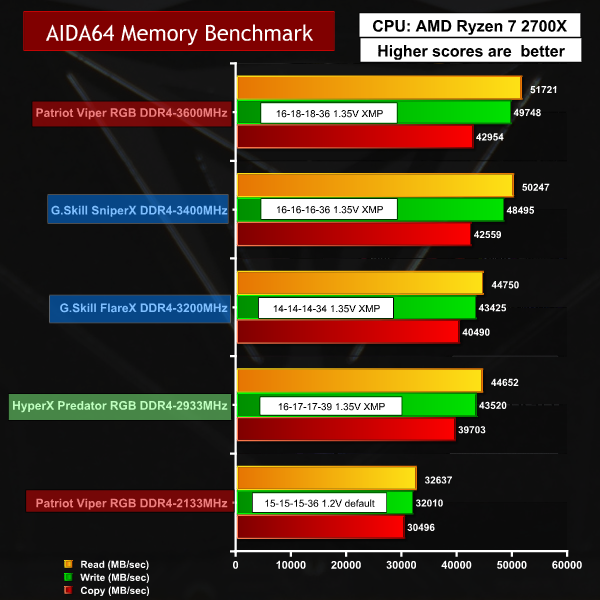
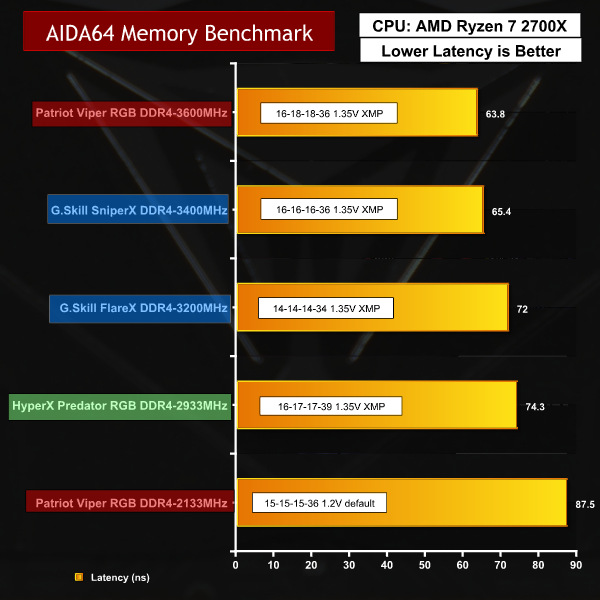
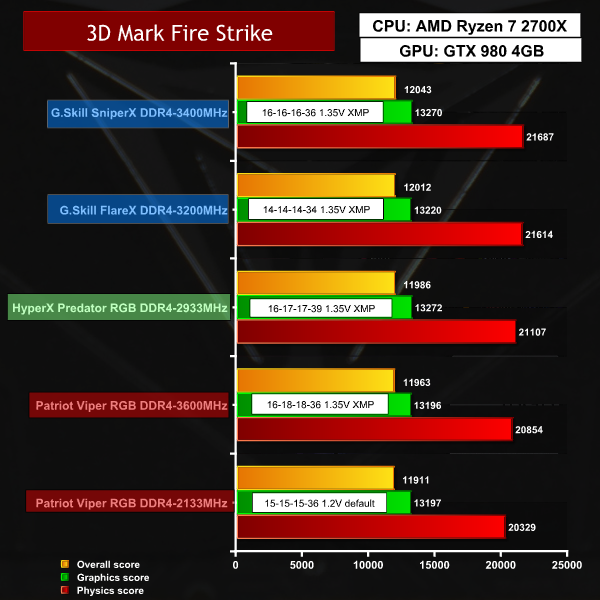
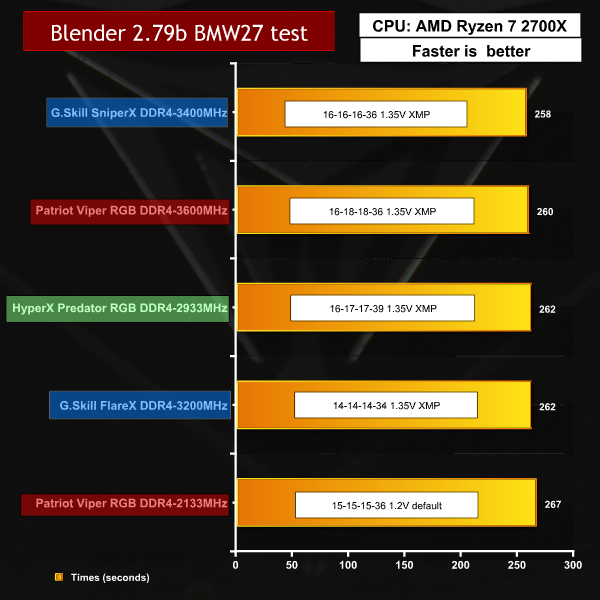
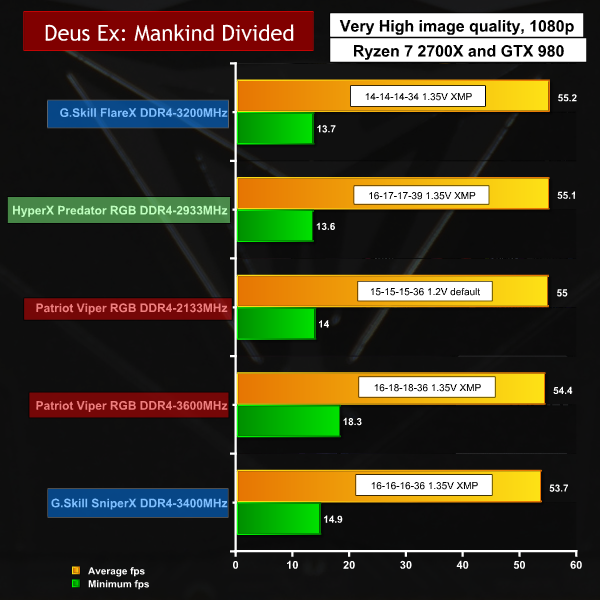
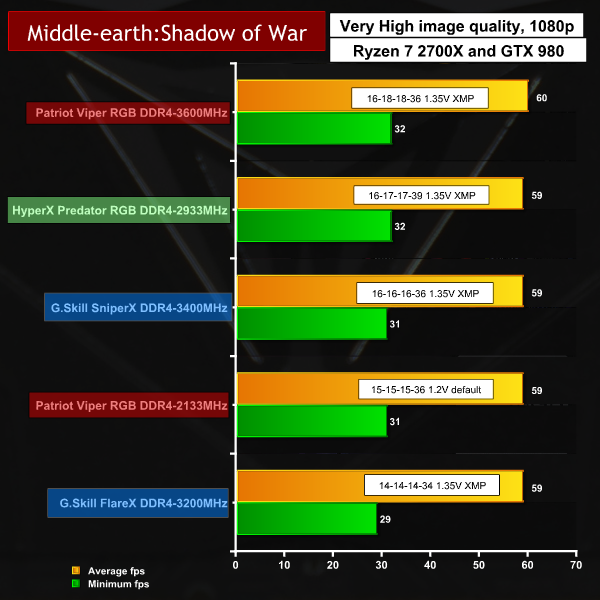
Testing Overview
You can clearly see from our results that the synthetic Sandra and AIDA64 tests show that faster memory gives you more bandwidth. Balanced against that Cinebench R15, 3D Mark Fire Strike and Blender offer little hope that the increased memory bandwidth gives an actual benefit, and when you add in the occasional quirky result it is very hard to argue that faster memory is demonstrably better. The one area that seems clear is that faster memory helps to increase minimum frame rates in games.
 KitGuru KitGuru.net – Tech News | Hardware News | Hardware Reviews | IOS | Mobile | Gaming | Graphics Cards
KitGuru KitGuru.net – Tech News | Hardware News | Hardware Reviews | IOS | Mobile | Gaming | Graphics Cards



